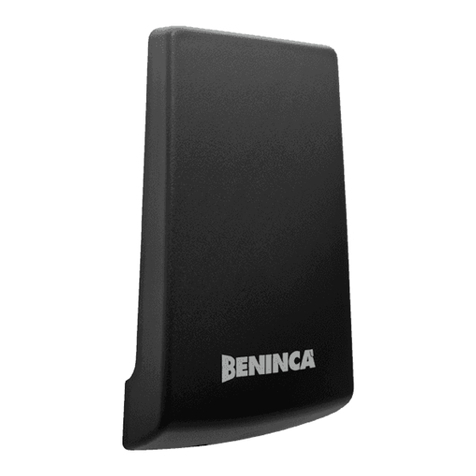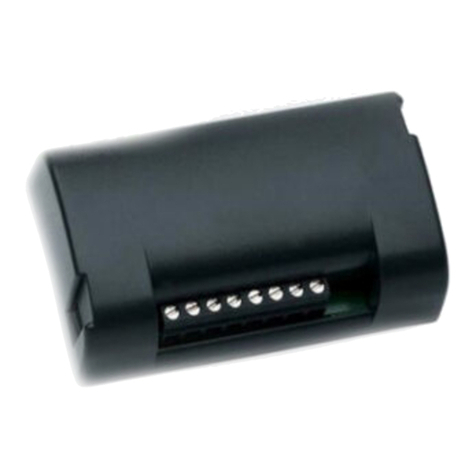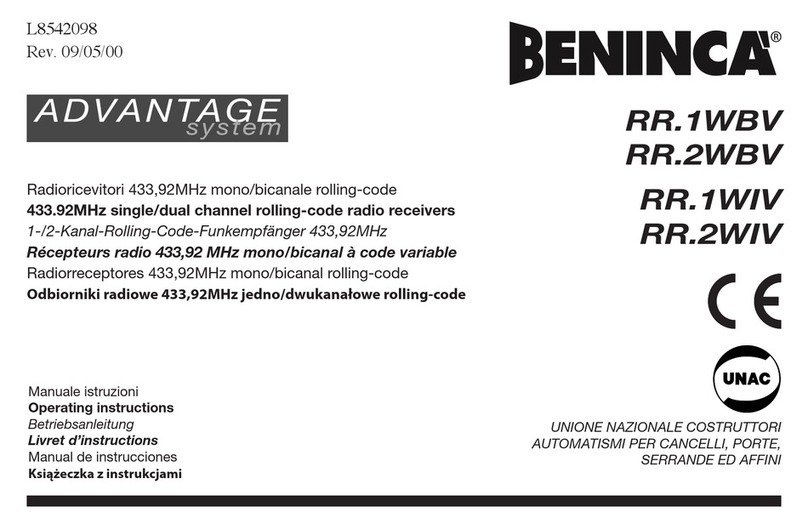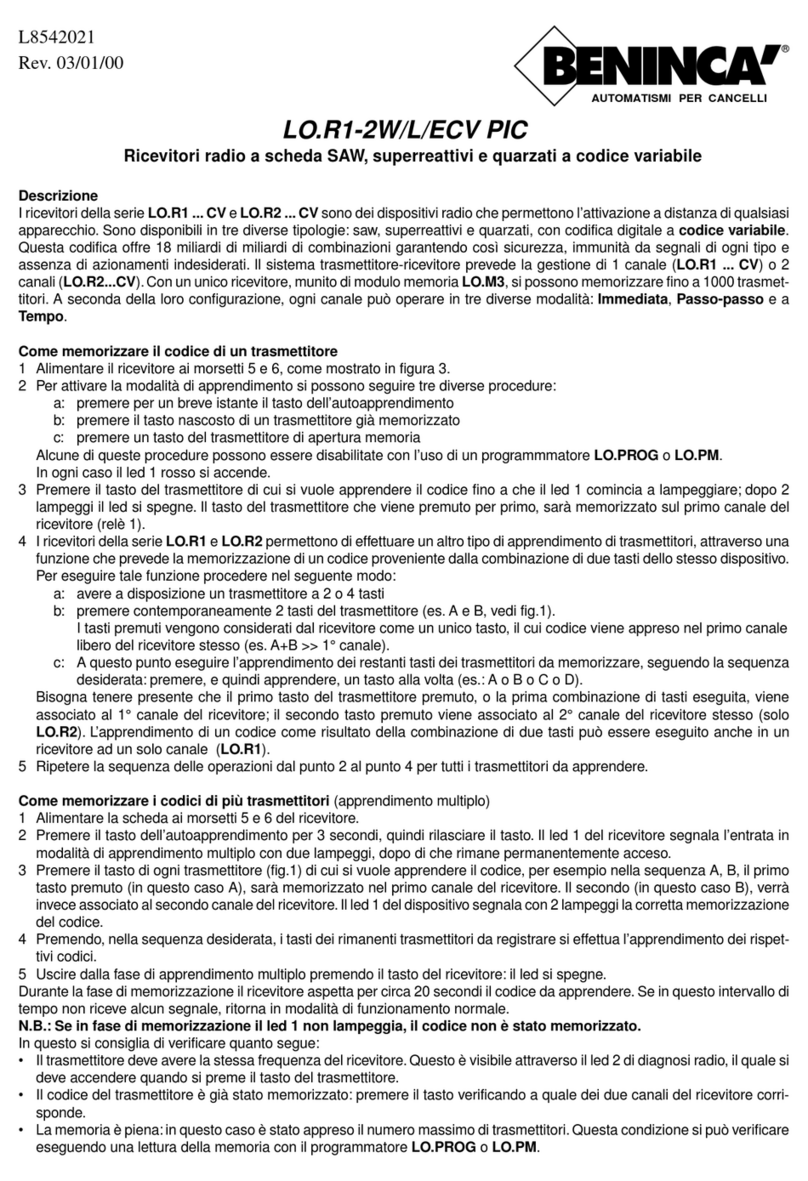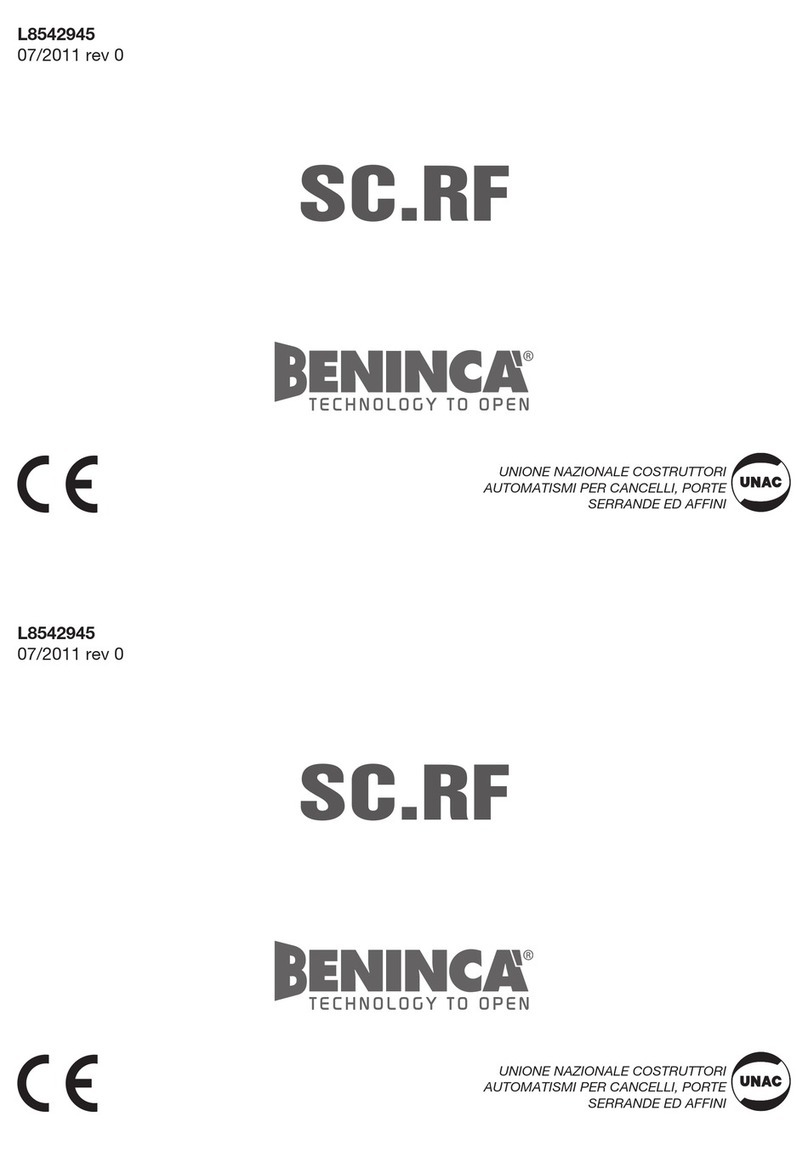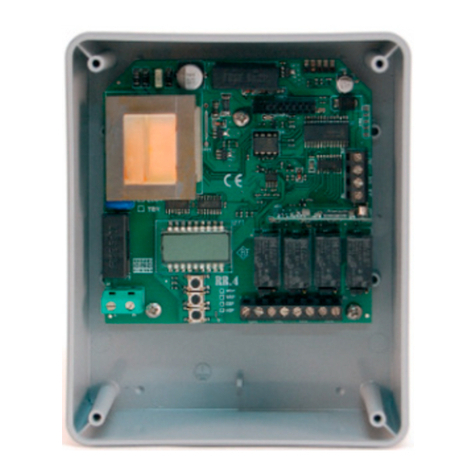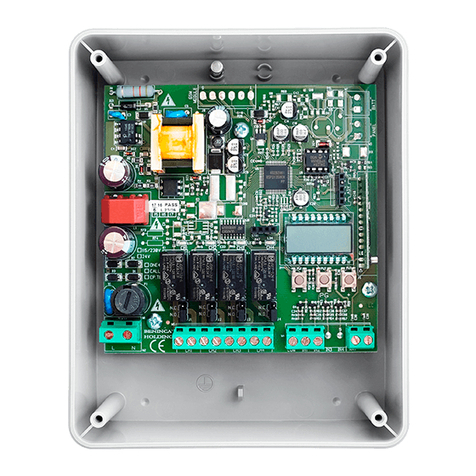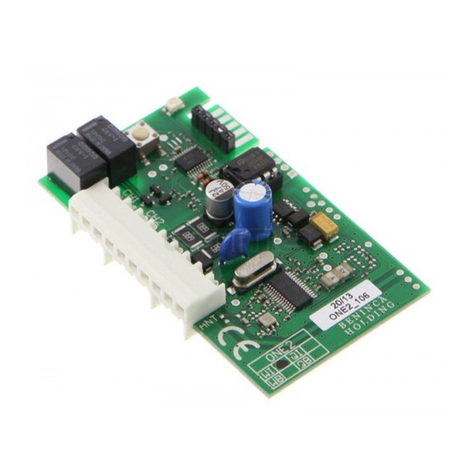
10
SC.RF
DESCRIPTION
Radio récepteur bicanal avec fréquence 868 MHz en conformité
avec la normative EN 12978, à joindre aux émetteurs radioélec-
triques pour vantaux mobiles de la série RF/RF.SUN.
DIMENSIONS
La figure 1 illustre les dimensions du coffret’ qui contient l’émet-
teur radioélectrique. Pour appliquer le coffret à l’intérieur de la
centrale ou de l’automatisme un bi- adhésif est fourni.
BRANCHEMENTS (Fig.4)
CH1* Sortie canal 1 réplique la condition de la barre palpeuse
mémorisée sur le canal 1 – contact normalement fer-
mé.
CH2* Sortie canal 2 réplique la condition de la barre palpeuse
mémorisée sur le canal 2 - contact normalement fermé.
12/24 Entrée alimentation 12 ou 24 Vac ou Vdc, sélectionnable
à l’aide du pontet 12/24. En cas d’alimentation 12/24
Vdc, respecter les polarités indiquées dans la Figure 2.
ANT Entrée antenne. A’ fin d’améliorer la réception il pourrait
s’avérer nécessaire d’ôter le câbleau préinstallé et utili-
ser une antenne 868MHz.
TST Pàs Utiliser.
* Les sorties CH1 et CH2 doivent être branchées de préférence
aux entrées pour barre palpeuse de la centrale de commande.
Dans ce cas, les entrées doivent être configurées comme si
elles étaient branchées à la barre palpeuse mécanique.
En principe les entrées pour barres palpeuses prévoient, en
cas d’intervention, l’arrêt immédiat et l’inversion du mouvement
pendant quelques secondes.
Autrement, ayant des entrées disponibles pour barres pal-
peuses, il est possible de brancher les canaux CH1/CH2 à
d’autres entrées de sécurité, comme par exemple les entrées
pour photocellules ou les entrées pour commande de STOP.
En cas de nécessité brancher les deux canaux à une seule en-
trée dans la centrale de commande, effectuer un branchement
en série des deux sorties.
CAVALIER
SC.RF dispose de 2 pontets cavaliers pour les réglages ci de
suite:
BZ: Active ou désactive l’ avertisseur acoustique.
Cavalier fermé: avertisseur acoustique actif
Cavalier ouvert: avertisseur non actif
12/24:
Sélectionne la tension d’alimentation.
Cavalier fermé: 12 Vac/dc
Cavalier ouvert: 24 Vac/dco
MEMORISATION DE L’EMETTEUR RADIO ELECTRIQUE
Pour communiquer avec l’émetteur radioélectrique RF/RF.SUN,
il faut mémoriser l’émetteur radio électrique même et l’affecter à
un des deux canaux disponibles.
Pour mémoriser sur le canal 1, procéder comme il suit:
1) Appuyer 1 fois sur la touche P du RECEPTEUR SC.RF
2) La LED LD1 s’allume et devient ROUGE
3) Dans l’espace de 20 secondes appuyer pendant environ 4
secondes sur la touche S1 du dispositif RF/RF.SUN.
4) La LED LD1 s’éteint momentanément et l’avertisseur acous-
tique avertit que la mémorisation a eu lieu.
5) Attendre que la LED LD1 s’éteigne
Pour mémoriser sur le canal 1, procéder comme il suit:
